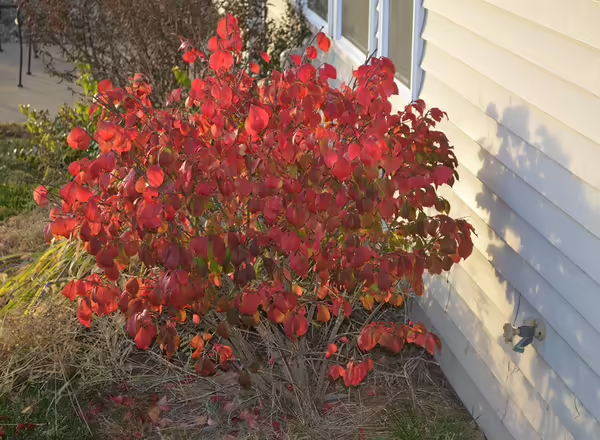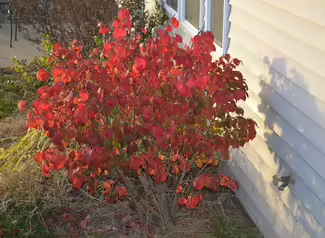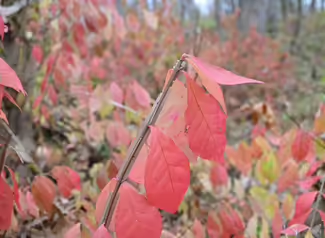
Invasive Burning Bush
Burning Bush Damage
Burning bush, Euonymus alatus, has long been planted as an ornamental in the home landscape because of its brilliant red fall foliage. But wildlife spread burning bush seed into natural landscapes such as forests, old fields, and roadsides where it establishes and outcompetes native vegetation.
History of Burning Bush
Burning bush was introduced from Asia in the mid-1800s as an ornamental shrub.
Regulation of Burning Bush
Burning bush is not regulated in Illinois.

Burning bush is a woody, multi-stemmed shrub that grows up to 20 feet tall. Its leaves are around 1 to 2 inches long, oppositely arranged on the stem, ovate in shape, and finely toothed along the margin. Stems are green to brown and have brown corky wings on the outer limbs.
In early spring, it has green flowers about a half-inch wide, in clusters of three. They are not very conspicuous and can be easily missed. In the fall, the leaves turn bright red, and the flowers develop into red berries about a half-inch wide.

- Mechanical: Plants can be pulled from the ground when the soil is moist but may re-root if they are left in contact with the soil.
- Cultural: Prescribed fire may kill seedlings but generally not large plants.
- Chemical:
- Apply 2 to 4% v/v glyphosate in water.
- Basal bark: For plants 4 inches in diameter or less, apply a triclopyr ester formulation at a 20% to 30% v/v rate, mixed with basal oil, to the lowest 15 inches of the stem.
- Cut stump: Apply glyphosate at a 25% to 50% v/v rate in water or triclopyr amine in water or ester in oil at a 20% to 25% v/v rate within 10 minutes of cutting.
- Always read and follow the herbicide label before initiating treatment. If seeds are present on the plant, take care not to spread them during control.
Presented by Ryan Pankau, Extension Educator, Horticulture Illinois forests are unique plant communities of towering trees as well as tiny, spring wildflowers. Invasive plants threaten native plant diversity in forest communities across Illinois by out-competing our natives for water, light, and...

